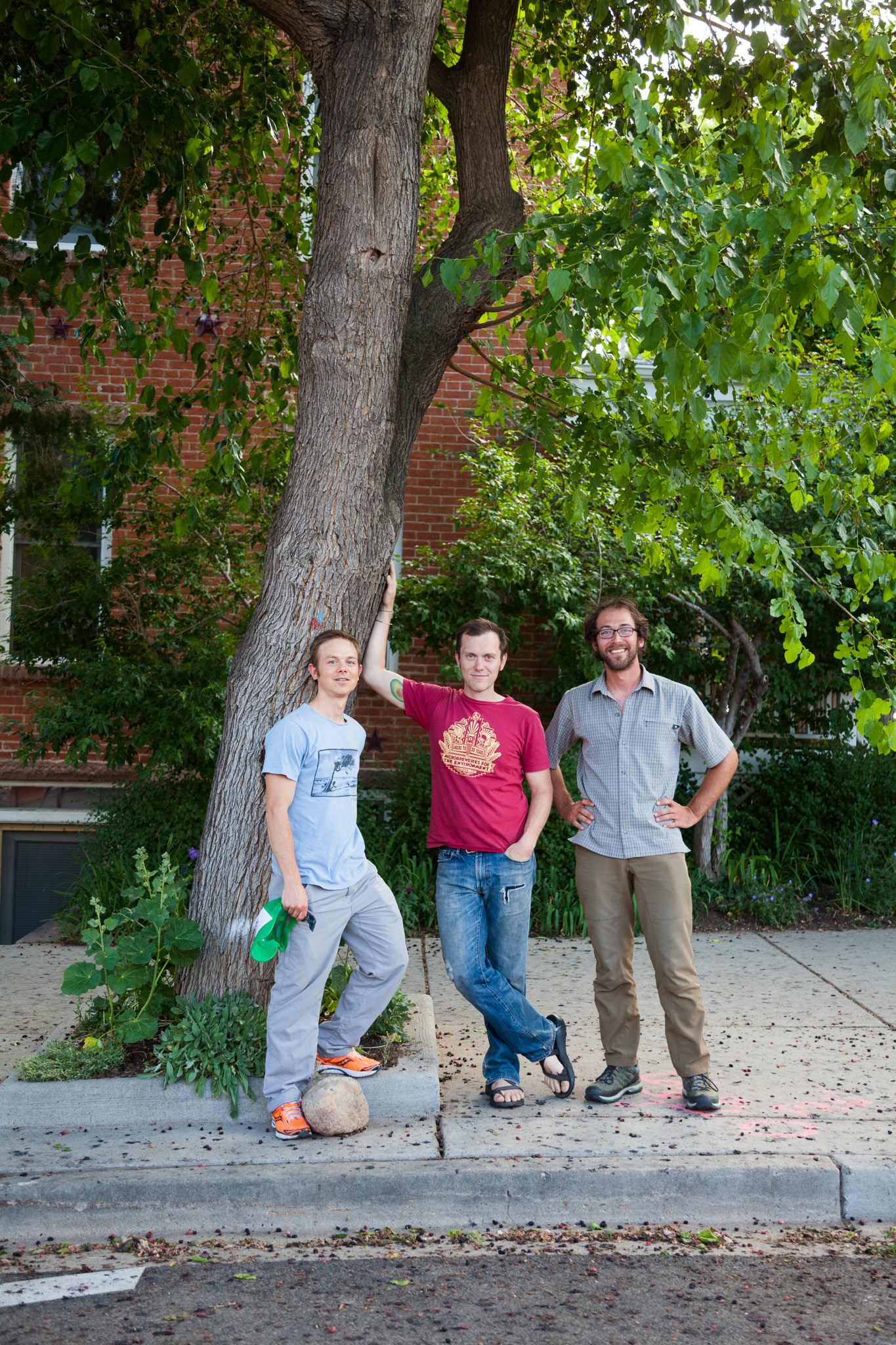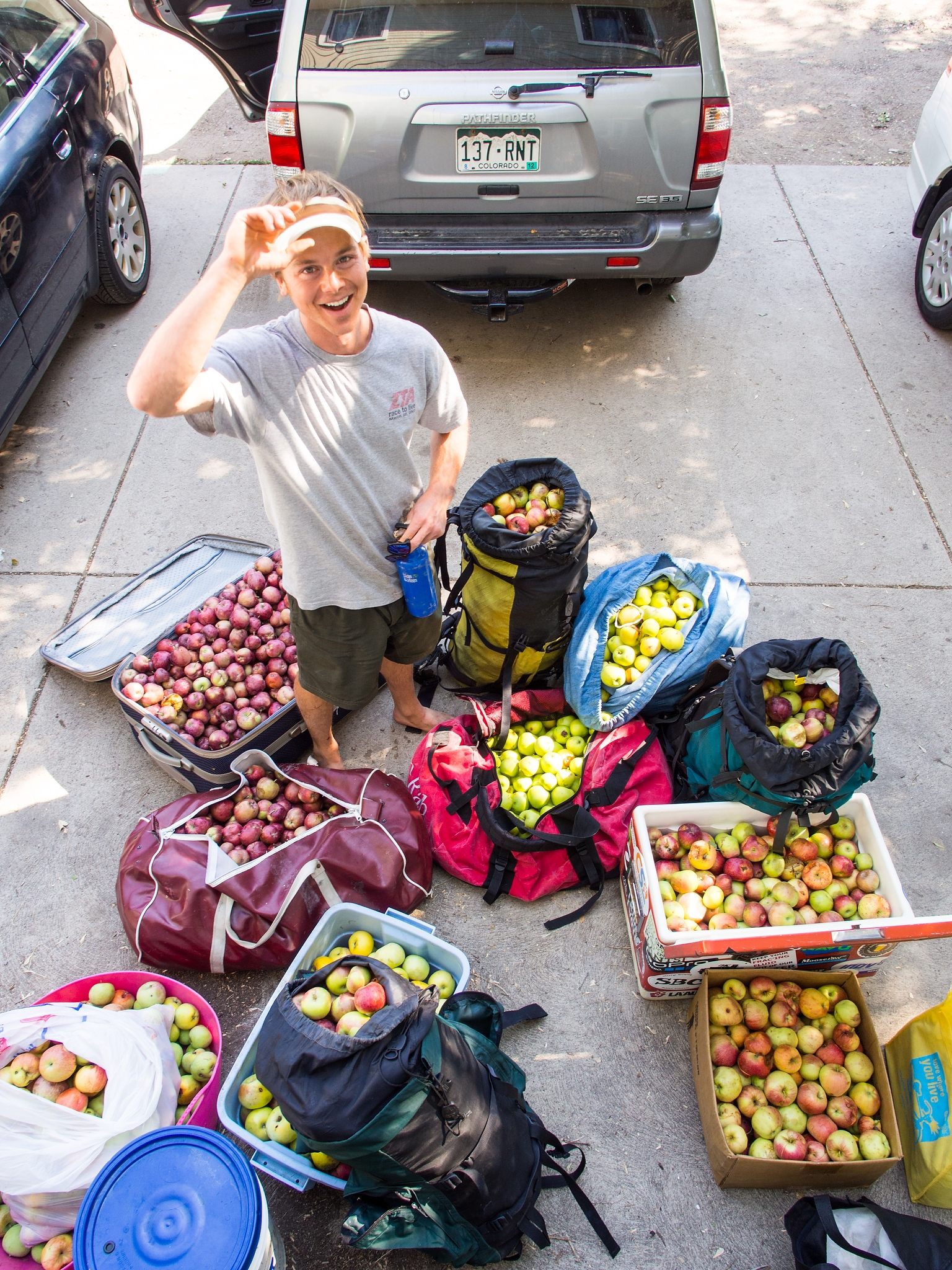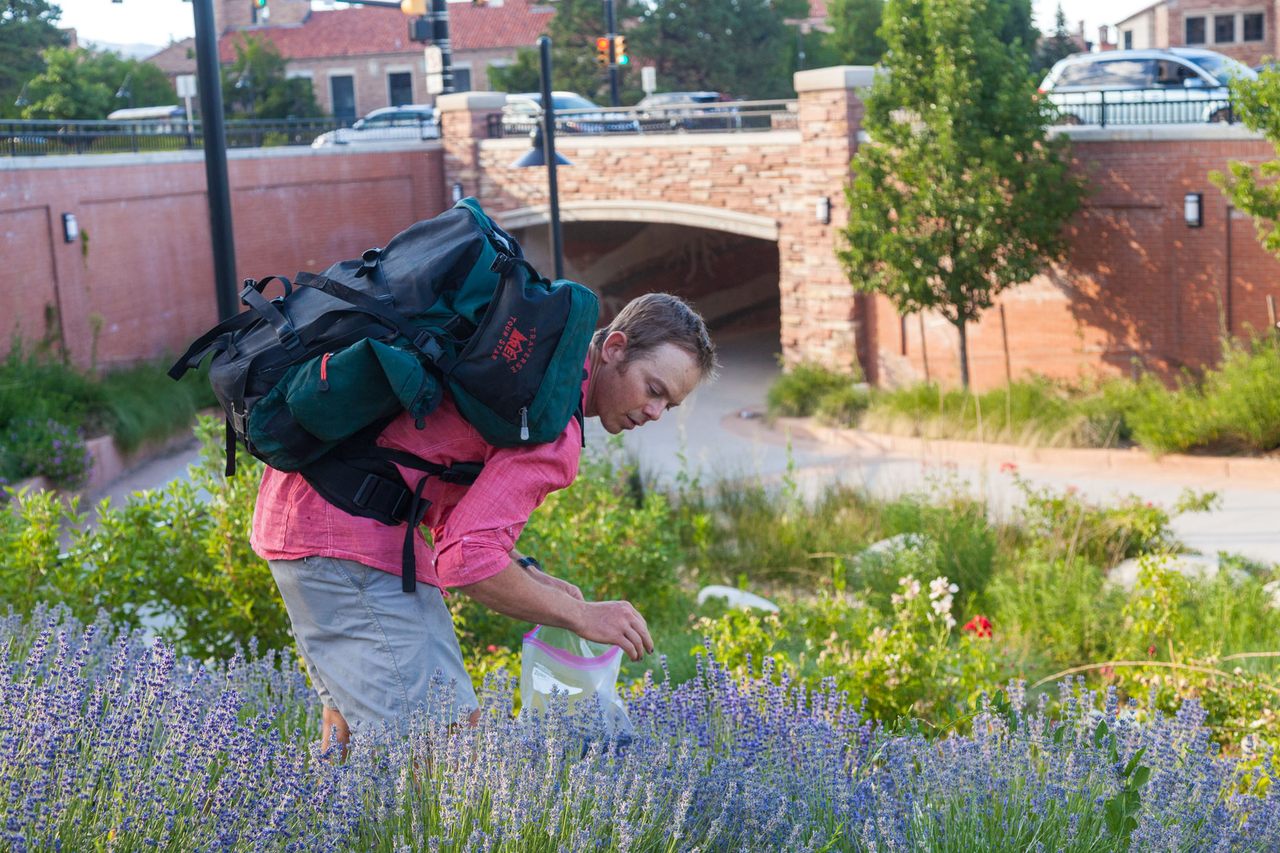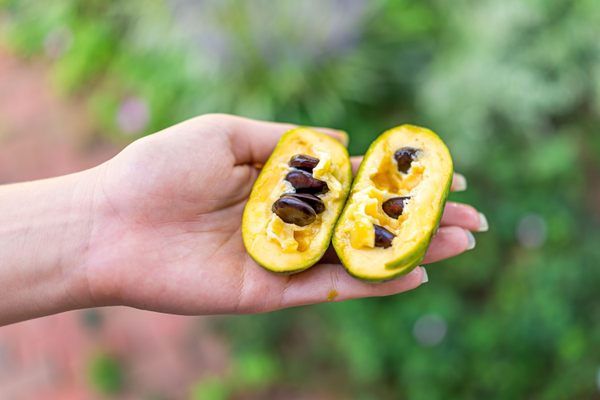This Website Reimagines Cities as Foraging Utopias
Falling Fruit offers a fresh perspective on food and the future of urban environments.
When Ethan Welty began brewing cider as a young graduate student at CU Boulder, he was faced with a challenge: finding apples.
It was a unique obstacle for the lifelong forager. As a young child living in France, Welty had foraged for chestnuts and mushrooms in the countryside and he continued the practice as an adolescent after moving back to the United States. But Welty wasn’t used to viewing a city as a source of food.
“You need to flip a switch in your mind to see the space around you differently,” says Welty, an adventure, nature, and conservation photographer. “Once I started looking for food in the city, I found it.” Using a handheld GPS device, a paper and pencil, a camera, and a local tree inventory from a previous project to track locations and fruiting schedules, his foraging became so robust that he did not have to buy any fruit at all. His Boulder finds have included lavender, which a local gelato store used in its burnt honey lavender gelato; staghorn sumac, which Welty used in a “sumac-ade” drink and as a spice; yucca; and black walnuts. He’s even used ponderosa pine needles, cones, and bark to flavor a beer.
In 2013, Welty and Caleb Phillips, a computer scientist and fellow forager, launched Fallingfruit.org, an open-source map that charts edible plants in cities around the globe to encourage urban foraging. They wanted a better tool to record locations and fruiting schedules recognizing the vast resource of food at hand and sizable number of potential converts to the practice.

Phillips and Welty started by populating the map with tree and plant inventories from governments and universities. But they also formatted the map as open source, inviting users to add locations and information about the plants to make it as inclusive as possible and a more valuable resource.
Since its inception, Falling Fruit—which currently features 1,533,034 locations around the world as varied as from Australia, South Africa, Poland, and Vietnam—has had 2,046,228 unique visitors. Users skew American, followed by the French, and range from professional and recreational foragers to older folks stretching their pensions. The site’s diversity is also evident in its available languages—which range from Hebrew to Arabic to Greek—and its wide variety of plants around the globe. Foragers are finding calamondin, an acid orange originally from China in Australia; common sea buckthorn in Poland; lilly pilly berries in South Africa; European dewberry in Lithuania; and the tropical fruit uvalha in Brazil.
Thanks to this botanical breadth, Welty says he’s also gained a great deal of knowledge, from taxonomy to identifying which plants are edible and how to prepare them. For example, he’s learned that the fruit of Cornus mas (cornelian cherry dogwood tree) are popular in Iran, preserved as jam, made into refreshing watery syrup drinks, pickled in vinegar and mint, or simply sprinkled with salt.

Welty envisions great potential in Falling Fruit to reimagine cities as places that can provide food to residents. “We share our cities with all kinds of food-bearing plants, almost accidentally,” he says passionately. “There is a lot growing that we should be more aware and taking advantage of, and ideally building community around, so that in the future we can actually demand more, expect more from our city, that we can imagine a more edible, urban future.”
He hopes the map will help to push the boundaries of what urban designers will consider planting, commenting that few cities have policies about providing food to residents and noting the irony in planting decorative trees bred specifically to not bear fruit.
Welty views Falling Fruit as a sort of activism. He notes that the project brings up questions of private property, who should have a say in the future of cities, and how everyone can benefit. Foraging on private property can be a delicate issue. Welty won’t take a tree or plant off the map if an owner requests it because a user could easily put it back on. Instead, he asks that the description state that the plant is on private property so foragers can ask owners if they can pick. Welty likes this approach because it encourages people to talk to each other.

Welty believes that a new way of thinking is required to incorporate foraging in planning cities, like creating areas to be harvested. “Because of its sort of diffuse, unstructured nature and almost anarchistic side, foraging is still a bit more fringe,” he says. He suggests reconceiving spaces between buildings or tearing out roads, whatever will maximize the space’s benefits to create opportunities to interact with plants in one’s neighborhood—a belief influenced by his office view of a “horrid concrete plaza” on the University of Zurich’s campus, where he currently studies glaciers.
Billings, Montana, is one city that’s experimenting with this approach. As part of its gleaning program, begun in 2018, over 120 fruit trees—including apple, pear, plum, and even apricot—were planted in parks where residents do not have easy access to supermarkets and then listed on Falling Fruit. People pick for themselves or to donate to food banks, reducing food waste and park maintenance. Churches and businesses with fruit trees on their property are being encouraged to add themselves to the map.

Falling Fruit has “encouraged me to be more investigative and observant in what’s around me,” says Amy Nations, a user from West St. Paul, Minnesota, who describes foraging as “plucking nature’s Christmas ornaments.” Nations says she’s learned so much from using the map, including how to prepare spruce tip panna cotta using tips she collected.
The map includes 2,217 location tags,mostly for plants, but there are also some fungi and the occasional fishing or clam-digging spot. It’s a purposely wide range to expose people to foods outside of what’s stocked in a grocery store. This includes dumpster locations to bring attention to waste in the food system and because they provide a relatively fixed location that generates food on some reliable schedule.
Users like Lily Brown of Boston have directly added 52,961 locations to the map. Brown, who enjoys having a close connection to her food and harvesting sustainably, has contributed approximately 20 locations around the city and says Falling Fruit “has been a wonderful way to keep track of the fruits and herbs I find. It’s also a great way to get an idea of what’s around me.” Her most unexpected find was a colony of hen of the woods mushrooms on a college campus. She also baked a tasty, autumnal apple bread using some foraged crab apples and acorn flour she made.
“It’s the community input that really makes an app like this,” says TJ Butler, who adds locations near him in Maryland. He’s found persimmons, apples, pears, and mulberries, and hopes for a seasonality filter in the future.

Adding that filter is a goal of Welty’s, who appreciates Falling Fruit’s success, though like with many tech startups, he wishes he had time and money to develop it further. Falling Fruit is a non-profit with a volunteer staff, mainly Welty. The project has mostly been one of data aggregation, but a new website and mobile app with improved filtering is in development.
Welty believes it should be easy for urban foragers to find food. He founded and is an advisory board member of Community Fruit Rescue, an organization in Boulder that harvests and rescues surplus urban fruit, and he hopes to bring about widespread change.
“The kind of data analytics I’d really like to be doing,” he adds, “is looking at how, where people are going, specifically what they’re interacting with, what kind of species, when they’re harvesting from them, to inform the decisions being made about what to plant next and where. That’s the dream.”
Gastro Obscura covers the world’s most wondrous food and drink.
Sign up for our regular newsletter.


























Follow us on Twitter to get the latest on the world's hidden wonders.
Like us on Facebook to get the latest on the world's hidden wonders.
Follow us on Twitter Like us on Facebook